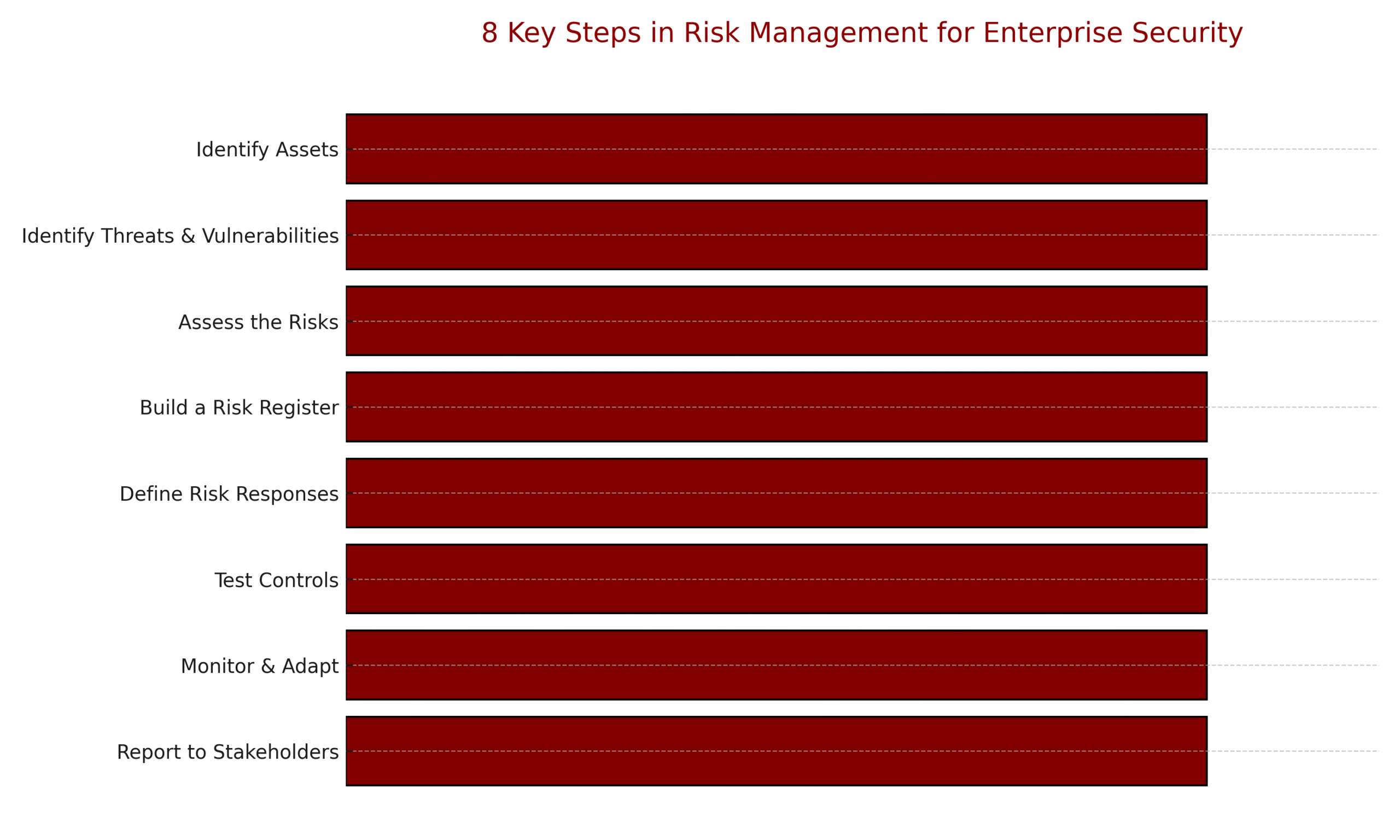
In today’s fast-moving digital landscape, risk management is essential. Whether you’re running a hospital, managing city infrastructure, or supporting public schools, your organization relies on critical systems and data that must stay secure, available, and compliant.
What Is Risk Management?
Simply put, risk management is the process of identifying and addressing potential threats to your technology, data, and operations.
But it’s more than just checking boxes. Done right, it:
• Aligns your security efforts with your business goals
• Helps prioritize where to invest time and resources
• Keeps stakeholders informed and ready to respond

1. Identify Your Assets
Take stock of what you’re protecting—hardware, software, data, and systems. Classify your data by sensitivity and note where it lives.
2. Spot Threats & Vulnerabilities
Identify potential risks like ransomware, phishing, insider threats, and outdated systems.
3. Assess the Risks
Use a risk matrix to evaluate each risk’s likelihood and impact—then prioritize what needs attention first.
4. Build a Risk Register
Track all identified risks with owners, mitigation steps, and progress. This becomes your go-to resource for managing security posture.
5. Define Risk Responses
Choose how you’ll handle each risk:
• Avoid it
• Mitigate it
• Transfer it (e.g. insurance)
• Accept it (if the risk is low)
6. Test Your Controls
Use audits, penetration testing, or compliance checks to see if your safeguards are working as intended.
7. Monitor & Adapt
Keep your risk register up to date. Monitor for new threats, technology changes, and evolving compliance needs.
8. Communicate to Stakeholders
Keep leadership informed with clear, non-technical reporting. Focus on business impact, mitigation progress, and decision points.
Why It Matters
Without risk management, you’re constantly reacting.
With it, you’re ready, resilient, and in control.
Risk management helps:
• Prioritize action over anxiety
• Ensure compliance with frameworks like NIST and HIPAA
• Build confidence with your team, board, and community
How Fidantis Can Help
We support organizations across sectors—especially healthcare, transportation, education, and rural infrastructure—with tailored, actionable risk management strategies.
Our services include:
• Risk assessments and BIA
• RTO/RPO planning
• Cybersecurity plan development
• Risk register design and reporting templates
• Executive briefings and stakeholder alignment